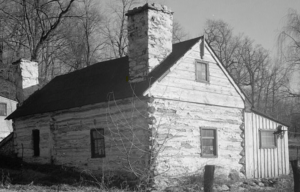PENNSYLVANIA STATE – Pennsylvania, a state steeped in rich history, is home to numerous historical landmarks. Among them, the Lower Swedish Cabin is a testament to the state’s earliest European settlers and their pioneering spirit. Constructed around 1640, this unassuming log structure holds the distinction of being the oldest house in Pennsylvania.
The Lower Swedish Cabin: A Glimpse into Pennsylvania’s Earliest Days
Located in Drexel Hill, Delaware County, the Lower Swedish Cabin was built by Swedish immigrants near the banks of the Delaware River. The cabin served as both a dwelling and a trading post, facilitating the exchange of goods between the settlers and the native Lenape people. It was part of the New Sweden colony, a short-lived Swedish settlement in the mid-17th century.
The cabin’s simple log construction reflects the early settlers’ practical needs and building techniques. While its exterior appears rustic, the cabin’s interior provides a glimpse into the daily lives of these pioneers. Its low ceilings, thick walls, and small windows were designed to provide warmth and protection from the elements.
Over the centuries, the Lower Swedish Cabin has witnessed Pennsylvania’s transformation from a wilderness frontier to a thriving state. The cabin served various purposes throughout its history, including a farmstead, a movie set, and even a temporary residence for displaced families.
Today, the Lower Swedish Cabin is carefully preserved by the Friends of the Swedish Cabin, a dedicated group committed to maintaining this invaluable piece of history. The cabin is open to the public for tours, offering visitors a chance to step back in time and experience the humble beginnings of Pennsylvania’s European settlement.
The Lower Swedish Cabin is more than just a historical building. It’s a tangible link to the past, reminding us of the courage and resilience of the early settlers who laid the foundation for the Pennsylvania we know today. A visit to this remarkable landmark provides a unique and enriching experience for anyone interested in Pennsylvania’s history.


Follow Us!